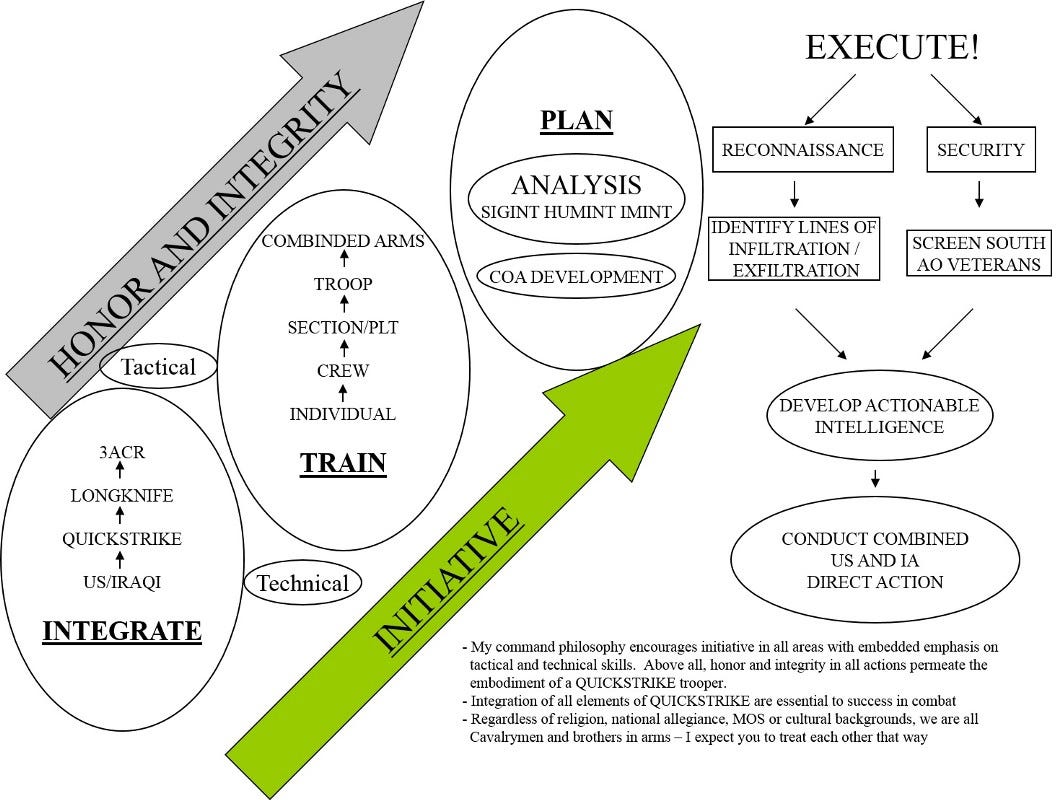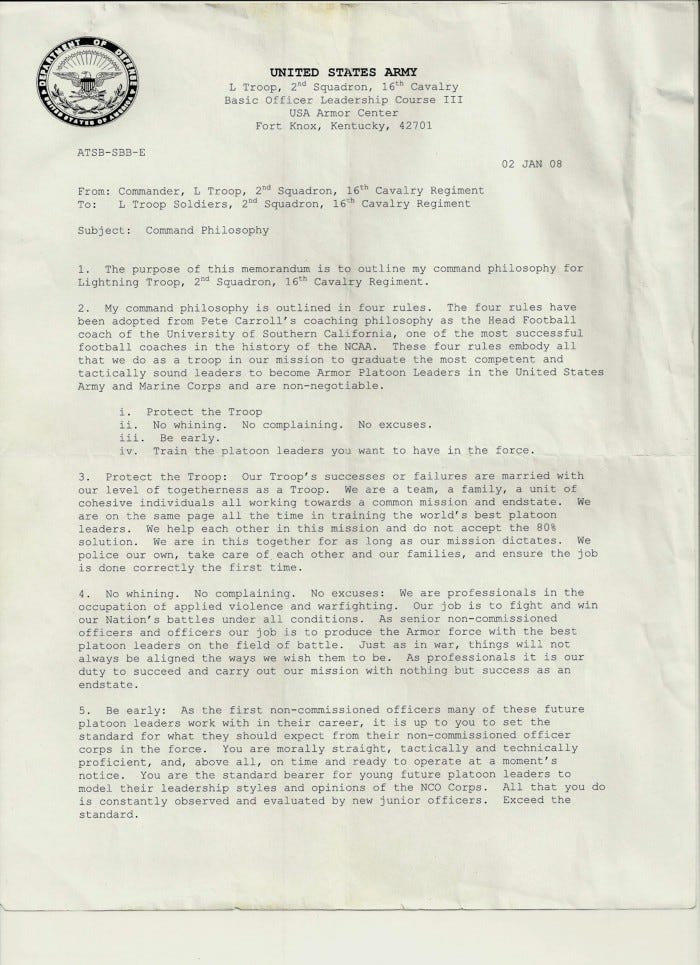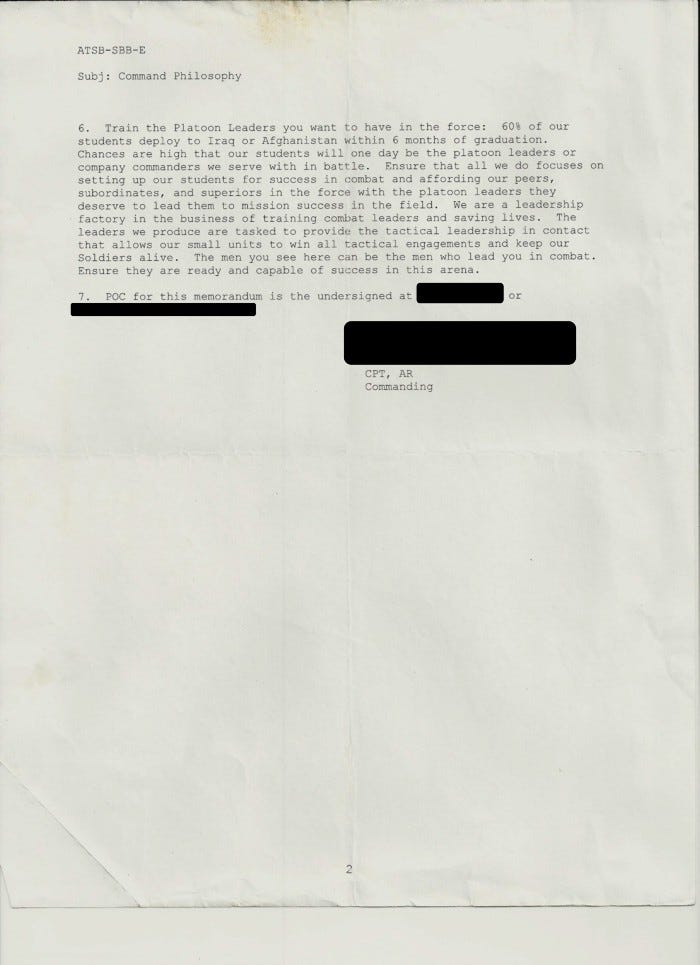 This piece continues the Twitter based professional conversation between military leaders in the United States and faculty and students at Kings College in London.
This piece continues the Twitter based professional conversation between military leaders in the United States and faculty and students at Kings College in London.
This week’s post was provided by Ryan Kranc, an Army Officer. A version is also posted on “Leadership Counts.” The views expressed here are the author’s alone and do not reflect those of the US Army or the Department of Defense. Read the post and join the discussion on Twitter #CCLKOW.
Nearly every leader has written a leadership philosophy and distributed it to their organization to provide insight to their thoughts on leadership. Some are pithy short narratives, some are pictures or Powerpoint slides, and some are long and drawn out monologues that deserve an intermission. I’ve written at least one version of each of the three categories with varying results. Looking back on the four leadership philosophies I’ve written and distributed over my 14 year career I can candidly assess that one was not a philosophy so much as a list of tasks, one was an organizational vision, one was easily digestible, and one was way too long.
I really wish I still had my engineer platoon philosophy. I’m going off memory because it was written on a computer with a Windows 3.1 operating system and stored on a 3.5inch floppy disk, the location of which is a mystery to all but God. Written with the determination and zeal that only a lack of experience could propel, it was a list of accomplishments without any real insight as to how I viewed leadership. It was terrible. I remember that among the “more important” paragraphs was the assertion that the platoon will average 280 or above on the Army Physical Fitness Test. Whatever that particular point was supposed to provide in terms of my leadership philosophy, it was likely not the same as the interpretation; this clown is fixated on getting results.
The fact is that it wasn’t a leadership philosophy at all. It was a list of tasks and desired achievements. It provided zero perspective on my vision of leadership. And for good reason; I simply did not have sufficient experience as a leader up to that point to have a philosophy on leadership. I had not been exposed to different theories and practices of leadership. I had not spent enough time in the leadership doctrine to determine what it meant to me. I had not had enough leaders at that point to be able to separate the good from the not as good. I was immature and stunted.

Fast forward four years; I enter command in Iraq and rapidly have to explain to my troop my leadership philosophy. While I had matured a bit and gained experience I still fell short. While it explained in general terms what I believed the troop needed to do to be successful, it was more an organizational vision than a leadership philosophy. It gave a cardinal direction but no azimuth. It was a one page Powerpoint slide that told my troop my interpretation of the operations process and how it applied to the troop. It also had misspellings (the hallmark of any well thought out leadership philosophy). While better than a list of tasks, it still didn’t meet the mark.
It represented an organizational vision, not a philosophy.
My next attempt was as an instructor at The Armor School. It was closer to the mark but was not what I would technically consider a leadership philosophy. It was titled “Command Philosophy” and heavily borrowed from Pete Carroll’s coaching philosophy and team rules while coaching at the University of Southern California and highlighted in this 2007 LA Magazine article. The Lightning Troop philosophy essentially said act like a team, don’t complain, set the standard, and train the platoon leaders you would want to lead you.


Looking back on it again I’m struck by the repetitive nature of a theme touched on in each of the four “rules” for the Troop; “succeed and exceed the standard.” Still results oriented though not as metric oriented as that first philosophy with the PT test example. As you can see, the words “success” or “standard” were found in each paragraph. The philosophy was in the ballpark; short, easily understood, pithy, but still not what I would now consider a leadership philosophy.
The latest version I wrote as a squadron S3 and later used as Regimental S3 and doctrine chief. It was too long (4 pages) and doubled as an initial counseling. It provided tertiary benefit as a sleep aid. It broke down each of the leader attributes, leader skills, and leader actions as outlined on DA Form 67–9, the Officer Evaluation Report. While explaining what each attribute, skill, and action meant to me and providing comprehensive explanation of my beliefs on 10 key areas it did not explain explicitly my vision of leadership and how my understanding of leadership effects the way I lead.
LTC (Ret.) Harry Garner wrote on this same subject in the September-October 2012 edition of Military Review. His assessment that most “philosophies” are actually no more than organizational or command philosophies is similar to my experience in writing and producing what I believed at the time to be leadership philosophies. Garner writes:
“In most cases, leadership philosophy denotes an organizational philosophy or what the military refers to as “command philosophy.” However, an effective command philosophy is contingent on first developing a personal leadership philosophy.”
He goes on to quote George Ambler later in the article to provide a leadership philosophy definition, a definition that resembles what I see as the necessary elements of a leadership philosophy:
“A set of beliefs, values, and principles that strongly influences how we interpret reality and guide our understanding of influencing humans. It’s our philosophy, our understanding, and interpretation of leadership, that affects how we react to people, events, and situations around us.”
So now I work on my fifth “leadership philosophy” in 14 years. The aim is to provide those I work with an understanding on how I see interpersonal relationships and how that vision affects my actions and reactions based on context and other human beings. It has to be short. While the fourth edition of my leadership philosophy was closer to the mark of the definition above it was simply too long.
Over time my developing vision will come out through this blog. While still a work in progress it will place my vision of leadership in an entirely different context than the list, the Powerpoint picture, or the long narrative. It’s an operation overlay, like what is used to prepare a unit for a tactical mission, complete with objectives, checkpoints, boundaries, routes, axis of advance, phase lines, and enemy icons. Like any operation, however, it’s only good if easily understood by those conducting the operation.
Question for discussion:
What do you think has to be in a leadership philosophy?
2. What is the difference between a command philosophy and a leadership philosophy?
No comments:
Post a Comment